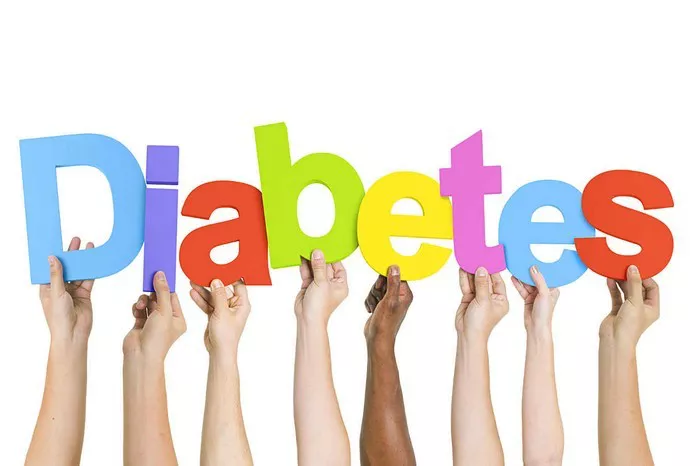Juvenile diabetes, more commonly known as type 1 diabetes, is a chronic condition that typically emerges in childhood or adolescence. Unlike type 2 diabetes, which is often associated with lifestyle factors, type 1 diabetes is primarily an autoimmune disorder where the body’s immune system mistakenly attacks insulin-producing cells in the pancreas. This results in the body’s inability to produce insulin, a hormone crucial for regulating blood sugar levels. When juvenile diabetes sets in, a series of physiological and metabolic processes go awry, leading to serious, long-term health implications if not managed properly.
In this article, we will explore what happens in the body when juvenile diabetes develops, the underlying causes, the symptoms, and the long-term effects of the disease. We will also discuss the importance of early diagnosis and management strategies to mitigate complications.
Understanding Juvenile Diabetes
Type 1 diabetes, or juvenile diabetes, is characterized by the autoimmune destruction of the insulin-producing beta cells in the pancreas. This destruction leads to an absolute deficiency of insulin, which is essential for glucose metabolism.
The Role of Insulin:
- Insulin is a hormone that facilitates the uptake of glucose from the bloodstream into cells, where it is used for energy.
- Without insulin, glucose cannot enter the cells and instead accumulates in the blood, leading to hyperglycemia (high blood sugar).
- Over time, high blood sugar levels can damage various organs and tissues in the body.
The Autoimmune Attack
In juvenile diabetes, the body’s immune system, which typically defends against harmful invaders like bacteria and viruses, mistakenly targets and destroys the beta cells in the pancreas.
The Autoimmune Process:
Genetic Predisposition: Individuals with certain genetic markers are more susceptible to autoimmune diseases, including type 1 diabetes.
Environmental Triggers: Factors such as viral infections, toxins, or stress may trigger the autoimmune response in genetically predisposed individuals.
Immune Response: The immune system mistakenly identifies beta cells as foreign invaders and attacks them using T-cells, leading to the gradual destruction of these cells.
Consequences of Beta Cell Destruction:
Loss of Insulin Production: As beta cells are destroyed, the pancreas loses its ability to produce insulin, leading to a reliance on external insulin administration.
Progressive Hyperglycemia: Without insulin, blood glucose levels rise uncontrollably, causing hyperglycemia and its associated symptoms.
What Goes Wrong in the Body?
When juvenile diabetes sets in, several critical physiological processes are disrupted:
Impaired Glucose Metabolism
Glucose is the primary energy source for the body’s cells. Insulin is necessary for glucose to enter cells and be used for energy.
Pathophysiology:
Hyperglycemia: Without insulin, glucose remains in the bloodstream, leading to elevated blood sugar levels.
Cellular Starvation: Despite high blood glucose levels, cells are starved of energy because they cannot access glucose without insulin.
Alternative Energy Sources: The body begins to break down fats and proteins for energy, leading to the production of ketones, which can cause diabetic ketoacidosis (DKA).
2. Diabetic Ketoacidosis (DKA)
DKA is a life-threatening condition that can occur when juvenile diabetes is not managed effectively.
Mechanisms:
Ketone Production: As the body breaks down fats for energy, it produces ketones, acidic byproducts that accumulate in the blood.
Acidosis: High levels of ketones lead to acidosis, a dangerous condition characterized by a drop in blood pH.
Dehydration: Hyperglycemia and acidosis can cause severe dehydration as the body attempts to excrete excess glucose and ketones through urine.
Symptoms of DKA:
- Nausea and vomiting
- Abdominal pain
- Rapid breathing (Kussmaul respiration)
- Fruity-smelling breath (due to ketones)
- Confusion or unconsciousness
3. Disrupted Electrolyte Balance
Juvenile diabetes affects the balance of electrolytes in the body, leading to potential complications.
Mechanisms:
Potassium Imbalance: Hyperglycemia and DKA can cause potassium to shift out of cells, leading to hyperkalemia (high potassium levels) or hypokalemia (low potassium levels) depending on the stage of the disease.
Sodium Imbalance: High blood sugar levels can lead to sodium imbalances, contributing to dehydration and worsening DKA.
Consequences:
Cardiac Arrhythmias: Electrolyte imbalances can lead to irregular heartbeats or even cardiac arrest.
Muscle Weakness: Changes in potassium levels can cause muscle weakness or paralysis.
4. Immune System Dysregulation
Juvenile diabetes not only results from an immune system malfunction but also affects immune function, leading to increased susceptibility to infections.
Mechanisms:
Chronic Inflammation: The autoimmune attack on beta cells leads to chronic inflammation, which can impair the immune response to infections.
Increased Infection Risk: High blood sugar levels provide an environment conducive to bacterial and fungal growth, increasing the risk of infections.
Common Infections:
- Skin and soft tissue infections
- Urinary tract infections
- Respiratory infections
5. Long-Term Complications
If juvenile diabetes is not effectively managed, it can lead to a range of long-term complications affecting various organs and systems.
Microvascular Complications:
Retinopathy: High blood sugar levels damage the small blood vessels in the retina, leading to vision problems and, in severe cases, blindness.
Nephropathy: Damage to the small blood vessels in the kidneys can lead to kidney disease and, eventually, kidney failure.
Neuropathy: Nerve damage caused by prolonged hyperglycemia can lead to peripheral neuropathy, resulting in pain, numbness, and tingling in the extremities.
Macrovascular Complications:
Cardiovascular Disease: People with type 1 diabetes are at increased risk of heart disease, stroke, and peripheral artery disease due to damage to the larger blood vessels.
Atherosclerosis: Chronic hyperglycemia can accelerate the development of atherosclerosis, the buildup of plaque in the arteries, leading to reduced blood flow and increased risk of cardiovascular events.
Symptoms of Juvenile Diabetes
The onset of juvenile diabetes is often sudden, with symptoms appearing rapidly over days or weeks. Recognizing these symptoms early is crucial for prompt diagnosis and treatment.
Common Symptoms:
Polyuria: Frequent urination due to the body’s attempt to excrete excess glucose through the urine.
Polydipsia: Excessive thirst resulting from dehydration caused by polyuria.
Polyphagia: Increased hunger as the body attempts to compensate for the lack of glucose entering cells.
Unexplained Weight Loss: Despite increased hunger, weight loss occurs as the body breaks down fat and muscle for energy.
Fatigue: Persistent tiredness due to the body’s inability to utilize glucose effectively.
Blurred Vision: High blood sugar levels can cause swelling in the lens of the eye, leading to vision problems.
Additional Symptoms:
- Recurrent infections (e.g., urinary tract infections, yeast infections)
- Slow healing of wounds
- Mood changes or irritability
Diagnosing Juvenile Diabetes
Early diagnosis of juvenile diabetes is critical for preventing complications and managing the disease effectively.
Diagnostic Tests:
Blood Glucose Testing: Fasting blood glucose, random blood glucose, and oral glucose tolerance tests are used to measure blood sugar levels.
HbA1c Test: This test measures average blood glucose levels over the past two to three months and is used to diagnose diabetes and monitor long-term glucose control.
Autoantibody Testing: Tests for specific autoantibodies (e.g., GAD65, IA-2) can confirm the autoimmune nature of type 1 diabetes.
C-Peptide Test: This test measures the level of C-peptide, a byproduct of insulin production, to assess how much insulin the pancreas is producing.
Importance of Early Diagnosis:
Preventing DKA: Early diagnosis and treatment can prevent the onset of DKA, a potentially life-threatening condition.
Reducing Long-Term Complications: Prompt diagnosis allows for the initiation of insulin therapy and lifestyle changes, reducing the risk of long-term complications.
Management of Juvenile Diabetes
Once diagnosed, juvenile diabetes requires lifelong management to maintain blood glucose levels within a target range and prevent complications.
Insulin Therapy:
Basal-Bolus Regimen: This regimen involves using long-acting insulin to provide a baseline level of insulin (basal) and rapid-acting insulin before meals (bolus) to control blood glucose levels.
Insulin Pumps: Insulin pumps deliver continuous insulin through a catheter placed under the skin, allowing for more precise control of blood glucose levels.
Blood Glucose Monitoring:
Self-Monitoring: Regular self-monitoring of blood glucose levels using a glucose meter is essential for adjusting insulin doses and managing blood sugar levels.
Continuous Glucose Monitoring (CGM): CGM devices provide real-time blood glucose readings and alerts, helping to prevent hypoglycemia and hyperglycemia.
Diet and Nutrition:
Carbohydrate Counting: Carbohydrate counting helps individuals match insulin doses to the amount of carbohydrates consumed, improving blood glucose control.
Healthy Eating: A balanced diet rich in whole grains, fruits, vegetables, lean proteins, and healthy fats supports overall health and diabetes management.
Exercise:
Regular Physical Activity: Exercise improves insulin sensitivity and helps maintain blood glucose levels within the target range.
Monitoring Blood Glucose: It is important to monitor blood glucose levels before, during, and after exercise to prevent hypoglycemia.
Education and Support:
Diabetes Education: Ongoing education about diabetes management, including insulin administration, blood glucose monitoring, and recognizing the signs of hypo- and hyperglycemia, is essential for individuals with juvenile diabetes and their families.
Psychosocial Support: Living with a chronic condition like juvenile diabetes can be challenging, and psychosocial support from healthcare providers, support groups, and mental health professionals is important for emotional well-being.
Long-Term Outlook
With proper management, individuals with juvenile diabetes can lead full, healthy lives. However, the risk of complications remains, and ongoing vigilance is required to maintain blood glucose levels within the target range and prevent long-term complications.
Preventing Complications:
Tight Glycemic Control: Maintaining blood glucose levels within the target range reduces the risk of complications such as retinopathy, nephropathy, and neuropathy.
Regular Check-Ups: Routine check-ups with healthcare providers, including eye exams, kidney function tests, and cardiovascular assessments, help detect complications early.
Healthy Lifestyle Choices: A healthy diet, regular exercise, and avoiding smoking and excessive alcohol consumption contribute to overall health and reduce the risk of complications.
See also: What Diabetes Is Hereditary
Conclusion
Juvenile diabetes, or type 1 diabetes, is a serious autoimmune condition that disrupts normal glucose metabolism and leads to a range of complications if not managed effectively. Understanding what goes wrong in the body when juvenile diabetes sets in is crucial for early diagnosis, effective management, and the prevention of long-term complications. With proper treatment and lifestyle modifications, individuals with juvenile diabetes can live healthy, fulfilling lives while minimizing the risk of complications.
Related topics:


























